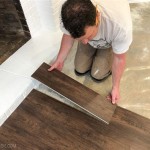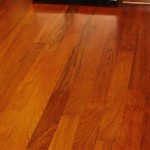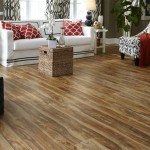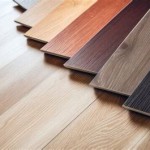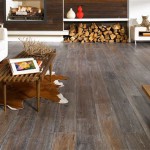Vinyl Vs Laminate Flooring: Pros and Cons and Cost
When it comes to choosing flooring for your home, there are countless options available, each with its own set of pros and cons. Two popular choices often considered are vinyl and laminate flooring. Both offer durability, style, and relative affordability, but they also have distinct differences that can influence your decision. This article provides a comprehensive comparison of vinyl and laminate flooring, covering their advantages, disadvantages, and cost considerations.
Vinyl Flooring: Pros and Cons
Vinyl flooring has undergone significant advancements in recent years, offering a wide range of styles and finishes.
Advantages of Vinyl Flooring:
Water Resistance: Vinyl is naturally waterproof, making it an excellent choice for areas prone to spills, such as kitchens, bathrooms, and basements. It can withstand moisture without warping or damage, ensuring long-lasting performance.
Durability: Vinyl is a tough and durable material, resistant to scratches, dents, and fading. It can withstand heavy foot traffic, making it ideal for high-traffic areas like hallways and entryways.
Easy Maintenance: Vinyl is low-maintenance. It requires regular sweeping or vacuuming and can be easily cleaned with a damp mop. Its smooth surface prevents dirt and grime from accumulating.
Affordability: Vinyl flooring is typically more budget-friendly than laminate, making it a cost-effective option for homeowners seeking a stylish and durable floor.
Variety of Styles: Vinyl flooring comes in a wide range of styles and designs, mimicking the look of natural materials like wood, stone, and tile. This allows homeowners to achieve a desired aesthetic without the high cost of real materials.
Disadvantages of Vinyl Flooring:
Limited Lifespan: Compared to laminate, vinyl flooring generally has a shorter lifespan, especially in high-traffic areas. It can show signs of wear and tear more quickly.
Installation Challenges: Installing vinyl flooring can be challenging for DIYers, requiring precise measurements and proper tools. It may be necessary to hire a professional for optimal results.
Potential Outgassing: Some vinyl flooring, particularly cheaper varieties, may emit volatile organic compounds (VOCs), which can be harmful to indoor air quality. Choosing low-VOC or VOC-free vinyl flooring is crucial for environmental and health reasons.
Laminate Flooring: Pros and Cons
Laminate flooring is a popular choice for its affordability and resemblance to hardwood. The core of a laminate floor is made of a durable composite material, with a decorative layer that replicates the look of real wood, tile, or stone.
Advantages of Laminate Flooring:
Realistic Appearance: Laminate flooring is known for its realistic wood-look finishes, offering a sophisticated and elegant aesthetic. This can be a cost-effective alternative to real hardwood floors.
Durability: Laminate flooring is incredibly durable and resistant to scratches, dents, and fading. It can withstand heavy foot traffic, making it suitable for high-traffic areas.
Easy Installation: Laminate flooring is relatively easy to install, with many brands offering click-lock systems that allow for quick and seamless installation. DIY installation is possible for many homeowners.
Low Maintenance: Like vinyl flooring, laminate is generally low-maintenance. It requires regular sweeping or vacuuming and can be easily cleaned with a damp mop.
Disadvantages of Laminate Flooring:
Water Sensitivity: Laminate flooring is not waterproof and is susceptible to damage from water spills. While it can be cleaned up quickly, prolonged exposure to moisture can lead to warping and delamination.
Limited Variety: While laminate flooring offers a selection of styles, it may have a smaller range of designs and colors compared to vinyl flooring.
Less Comfortable Underfoot: Laminate flooring tends to be harder and less comfortable underfoot than vinyl flooring, especially in areas with bare feet or children playing.
Less Eco-Friendly: The manufacturing process of laminate flooring typically involves using non-renewable resources and can have a higher environmental impact compared to vinyl flooring.
Cost Comparison
The cost of vinyl and laminate flooring can vary depending on factors such as the type, quality, and installation costs. However, vinyl flooring is generally more affordable than laminate flooring.
Vinyl Flooring Cost: Typical prices range from $1 to $4 per square foot, depending on the material and features.
Laminate Flooring Cost: Costs usually range from $2 to $6 per square foot, but they can go up to $10 or more for high-end brands and styles.
Installation costs for both vinyl and laminate flooring typically range from $2 to $5 per square foot.

This Or That Laminate Vs Vinyl Ben Laube Homes

Laminate Flooring Vs Vinyl Pros And Cons East Coast Interiors

Luxury Vinyl Vs Laminate Flooring Pros And Cons The We Chose Angela Marie Made

Laminate Vs Vinyl Flooring Costs Pros Cons Differences 2025

Laminate Vs Vinyl Flooring Pros And Cons How To Choose Lx Hausys

Vinyl Vs Laminate Flooring Pros Cons Comparisons And Costs Fixr

Comparison Laminate Vs Vinyl Flooring Which Is Better

Luxury Vinyl Vs Laminate Flooring Pros And Cons The We Chose Angela Marie Made

Vinyl Vs Laminate Flooring Which Is Best Carpet Decor

Vinyl Vs Laminate Flooring What S The Difference
See Also
